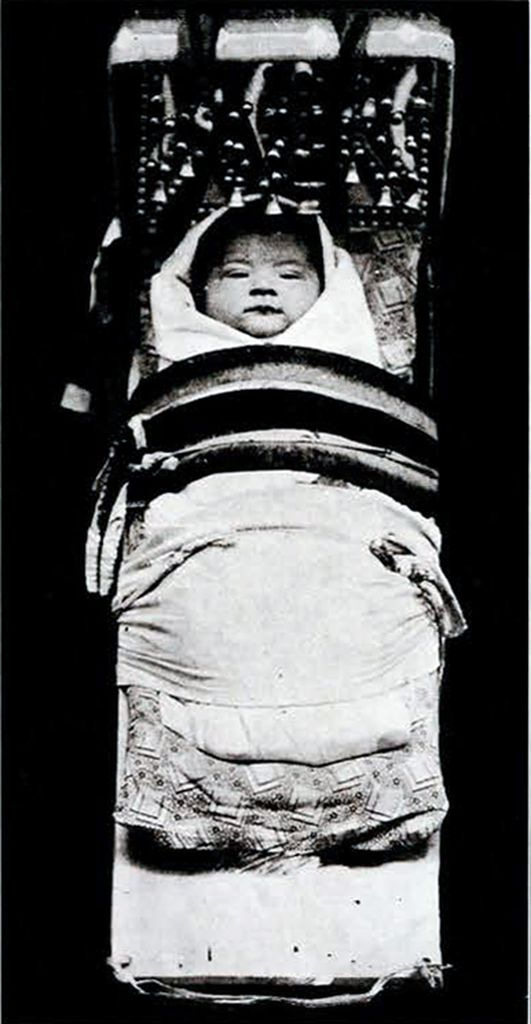Taxes of the Built Environment
Diapers being butt one.
Some readers might be familiar with the potty-training method called “the naked weekend.” As you would expect, this method involves liberating a toddler of clothes for a few days, which allows them to more easily notice when they pee or poop—or eliminate, as the technical jargon goes. The hope is that the toddler begins associating bodily sensations with the act of eliminating, a prerequisite to making it to the toilet on time. Of course, the naked weekend requires some damage control. Some of my friends have moved their furniture out of the house for the weekend; others have draped it or pushed it aside; still others have traveled to an Airbnb or vacation home with little furniture.
Results have varied. For example, when our friends’ first son (C) reached the potty-training age, his parents made the necessary precautions for a naked weekend. On Saturday morning, while C was squatting and playing with his trucks—probably dump trucks—his dad noticed that a log had appeared on the hardwood. Wanting to instill in his son the sort of association with toilet activities that would lead to healthy adulthood, dad said:
“C, look behind you! I’m so proud of what you’ve done!”
C turned around and was horrified. He jumped up from the product of his labors as if it were an alligator coming out of the water, and ran around the house screaming for the better part of an hour. This encounter set him back in his toilet-training for months, and if you ask a Freudian, his life is all but over.
At any rate, I have to admit that I find the naked weekend pretty ridiculous. Part of this is because, in discussing its trials and tribulations with friends, a simple question is often ignored: Why are children dissociated from their pees and poops?
Infancy and toddlerhood are long, drawn-out processes during which a child is learning all sorts of things: what a sneeze is, how to move its arms in a productive manner, the difference between night and day, what a fart is, how to track movement with its eyes, who Dad is, and so on. On average, American children potty-train between two and three years old, going through 5-10 diapers a day until then. How is it possible for babies to fill literally thousands of diapers without coming to recognize nature’s call?1 Likewise, how can so many parents—after changing those diapers—still miss their child’s signals?
It turns out that diapers themselves are to blame.
Diapers smother the process of learning for both children and their caregivers. When a child pees, for instance, modern disposable diapers soak up the urine, leaving the baby’s bottom relatively dry. This prevents babies and caregivers from drawing a connection between cause and effect. Indeed, it is this very association that the naked weekend hopes to instill, albeit on a drastically condensed timeline.
Think about it this way. Would we expect a child wearing a muzzle to learn how to speak properly? Of course not. And if we wanted to suddenly jumpstart their speech development, what would we do? We’d take the muzzle off. We’d try a “muzzle-free weekend.” Fortunately, the furniture could stay put.
It requires one more degree of why, however, before we are brought to a truly interesting place. Why do disposable diapers exist in the first place? Because of the built environment.
Elimination Communication: The Old (& New Crunchy) Way
I was surprised to learn that disposable diapers were only invented about seventy years ago and that only about half of parents worldwide use them.2 For much of recorded history, then, as in many places today, diapers were made from natural materials. The Inuit, for example, packed moss in sealskin.
Another option is as old as parenting itself: not using diapers at all. Today, this is known in crunchy circles as “elimination communication.”3 Elimination communication basically means learning when the baby is about to go and directing excretory contents to an appropriate place. (Ideally, away from the body.)

Here are some examples of elimination communication from traditional cultures:4
“Konner, in his studies of the Zhun/Twasi [!Kung], an African hunting-gathering culture, found the infants carried in the Ugandan fashion. These mothers always knew when the infant was going to urinate or defecate and removed the child to the bushes ahead of time. The mother sensed the general state of the infant and anticipated the infant’s every need.”
Among the Chaga in Tanzania: “As long as the child is carried about, the mother closely observes it and develops an almost uncanny knack of guessing its needs…Whenever it wakens, becomes restless, or, in the case of a boy, has an erection of the penis, it is held out...”
Among the Tiriki in Kenya: “Babies are not diapered, and the adult or child nurse is quick to hold the infant away from her body at the first sign of evacuation.”
Some readers might doubt that mothers can learn their baby’s elimination cues, but if there’s one thing I’ve learned from poring over anthropological accounts of hunter-gatherers, it’s that humans can make a wide range of seemingly-difficult tasks look effortless. This ranges from shooting a bow and arrow on horseback to balancing baskets on one’s head.5
As a brief aside, I think part of the reason we are so impressed with the abilities of ancient peoples is that we are surrounded in the modern world by so much technology, which obviates doing anything all that impressive. Don’t get me wrong: if our ancestors could see me typing away on my computer, their jaws would hit the floor. They’d be much more impressed by the computer itself, of course, than my ability to poke its keys, but I also think they’d reserve some of their astonishment for how quickly I hit the keys (90 words a minute, baby).
By and large, though, people with little technology are asked to fill the gap with skill. People with plenty of technology, not so much.
Now, elimination communication has some benefits, namely avoiding the costs of diapers, which, in addition to delaying potty-training, are expensive for both parents and the planet. Why do 95% of families in developed countries use disposable diapers nonetheless? The answer can be found in this blog dedicated solely to the benefits of wearing your baby—don’t you just love the internet?—which of course recommends elimination communication, too. The author writes:
Elimination Communication is a gentle process. It is not about ‘training’ your baby or rushing them to grow up before they are ready. It’s about the baby communicating their need to go, relaxing and releasing at will with the parent supporting them over an appropriate receptacle. This could be a bucket, toilet, sink, the grass or a specialised infant potty.
Surely you see the problem? What percentage of the space underneath my daughter’s butt—oh yeah, I’m a dad now—is a bucket, toilet, sink, natural surface such as grass, or infant potty? Almost none of it. And to make it so would upend my life.

Now, you might respond that there is still a fair bit of grass, dirt, sand, and so on left in America. Except—most of it is not an acceptable place for my child to evacuate. In the town where I live, for example, which is a sleepy suburb that loves its nature, over 90% of the outside surface is road, sidewalk, or someone else’s property. If I have to pick up runny poops from my neighbor’s yard, shouldn’t I just stick with diapers?
This argument applies even more to indoor spaces, where people are spending more and more time. It’s one thing to get pee on the sidewalk; it’s another to get it on my neighbor’s couch or the bar where I like to pony up for a martini.
The situation was reversed for most people of the past, who really could move their baby a few inches from their body when they felt its signals and have its waste land on innocuous territory much of the time. To wit:
Among the !Kung in Botswana: “Babies are naked and, since there are no floors but the desert sand, not much is made of their urinating wherever they are. When they defecate, they are wiped with grass and the fecal matter is cleaned up at once by some older child or adult and carried off.”
“[I]n Tiriki huts, which mostly have floors of pounded earth smeared with dung, accidental soiling by a baby does not pose much of a cleanup problem.”
Elimination communication isn’t viable for most parents in developed countries, then, because those countries are developed. There’s too much underfoot—or underbutt—for pee and poop to damage. That is why, for most parents, diapers are well worth their many costs.
Poop Quiz
Let’s see if I have been communicating my point clearly. In this article, the author claims that Chinese grandmothers “would be appalled” by data showing that only half of American children are toilet-trained by age 3. These grandmothers would
likely point out that with “split pants,” most kids are trained by age 2. This traditional wardrobe item features an opening along the crotch seam, allowing children to urinate and defecate freely without soiling their clothes. These garments remain the pants style of choice for toddlers living in the Chinese countryside.
A Concrete Example
Let’s ask a related question: why are people asked to clean up after their dog? Because it’s gross, yes, but why is it gross? Concrete is a big part of the answer.6
Not only does concrete preserve pee and poop, elongating the process of biodegradation, it also highlights them. Urine on sand, as noted above, disappears quickly—but even if it lingers, it doesn’t draw attention. It blends in, as natural substances tend to do against natural backdrops. Same with feces: a turd on the forest floor barely registers, but in the Vatican, it would be cordoned off with police tape.
So, while concrete provides fair warning to pedestrians, it also serves as an artificial relief. It makes pee and poop stand out and seem gross.
Recalling Heying and Weinstein’s notion from A Hunter-Gatherer’s Guide to the 21st Century that the benefits of new technologies are obvious but the hazards are not, I would argue that one of the overlooked hazards of concrete has been to render the modern environment inimical to quick and mindless elimination.7 The benefits of concrete are much more apparent—providing a consistent, level surface for people and vehicles to move on. Before cities were doused with cement and asphalt, floods were less predictable, roads were less permanent, shoes tracked more muck inside, and so on. In fact, because city surfaces were once more forgiving toward pee and poop, people and their animals likely peed and pooped on them more often, which obviously wasn’t ideal.
Concrete, then (among other things) made cities into less acceptable toilets, necessitating (among other things) diapers and doggie bags.
Back to Babies (and Basics)
Based on my short time as a parent, babies seem to cry mainly for the following reasons:
They are hungry.
They have a soiled diaper.
They are too hot or cold.
They are on their backs (they much prefer being upright or on their stomach).
They are stationary.
It is quiet.
Around 20% of babies are colicky, of course, and other conditions (such as acid reflux) can cause babies to cry much more than normal. Plus, sometimes babies cry because they’re babies—there is no rhyme or reason. Yet it stopped me in my tracks the other day when I realized that all of the items on the list above are solved by caregivers wearing their babies—for example, in a traditional sling as shown below—as humans have been doing until about a minute ago in evolutionary time.

In the above position, a baby does not cry from hunger because a nipple is ever-present.8 Diapers become unnecessary when a mother learns her baby’s signals and moves it away at the critical moment.9 There’s no need to fuss with a thermostat when the body temperature setting is available. The traditional position of a sling or carrier usually has the baby upright or at an angle—hardly ever completely horizontal (a common cradling position these days) or on its back (the current recommendation from the American Academy of Pediatrics for naps and nighttime). Finally, being attached to someone solves for movement and sound: there are no movements more syntonic to a baby than those of a living human (e.g., walking, breathing), and no better music than a heartbeat.10
Thus, 95% of the time that my wife and I carry our baby, she is content—and my wife doesn’t even leave her breasts out!
Game-Changing My Ass
It must be due—at least in part—to the points above that slings are coming back into fashion. The baby carrier—or what my wife and I call “the strap on”—has been a staple for some time now.
Funny enough, these technologies are heralded as game-changing—just ask any parent—despite mimicking what humans have made for tens of thousands of years with basic natural materials. Why do we consider them game-changing then? The built environment! The built environment forced us away from tried-and-true methods in the first place, and now wants credit for solving a problem that it created. Shameless!
The built environment isn’t solely physical like concrete. It encompasses anything that interferes with the simple carrying out of natural processes. Thus it includes institutions, processes, norms, and so on.
For example, another challenge of modern parenting is navigating the whole breastmilk-versus-formula issue. Those who wish to breastfeed exclusively, and remain a somewhat normal member of society, have to figure out how to feed or pump away from home. Here, things like laws and norms complicate the simple, straightforward option. For one, it was not until 2018 (!) that all 50 states had laws explicitly protecting public breast-feeding. Until then, it was something of a gray area, and women could be (and were) harassed for exposing their breasts.
Second, even though public breastfeeding is now legal, many of my friends are uncomfortable doing it—even under a blanket or shawl. The WEIRD nudity norms that their hesitance is based on are as much a part of the built environment as concrete.

Nor does the built environment only interfere with potty-training. It interferes with many basic dynamics of human life, from work and dating to education and play. Consider this passage from Jared Diamond’s The World Until Yesterday:
…in parts of American cities where people do not know their neighbors, and where car traffic and potential kidnappers and a lack of sidewalks mean that children cannot safely walk to play with other kids, children have to be taught formally how to play with other children in classes termed “mommy and me classes”…There are many features of modern American society that my New Guinea friends consider bizarre, but nothing astonished them more than being told that American children need specified places, times, and instruction in order to learn how to meet and play with each other.11
Because of the built environment, everything must be over- (or at least re-) engineered. Often, this takes the form of a brief return to simpler times. The naked weekend, for example, mimics points in human history when much could be soiled without consequence. Similar workarounds for once-simpler dynamics of human life include nature retreats, tech cleanses, the paleo diet, slow travel, analog living, and minimalism.
When did the environment start getting built? I’m sure historians would have different answers. But, generally speaking, earlier than you might think. Take humans moving into cold climates as an example. It was ultimately our ancestors’ ability to make fire, warm clothing, and protective structures—to make an environment within the environment, a sort of mise en abyme—that allowed them to occupy previously inhospitable lands. Yet it also necessitated diapers. I mean, imagine this Osage kid not having some sort of diaper and then sitting in a tent for a few hours next to a fire:
So, in short, I’m not making a moral attack against concrete. I’m making a logistical argument about the built environment. I’m saying that people who live in built environments have to find workarounds for things like potty-training because the default option—of going when you have to go, wherever you happen to be—is no longer viable.12 One could proceed from there to make the argument that the closer a person’s environment resembles the one in which humans evolved, the simpler life will be. This doesn’t mean that life will be better. Then again, it might.
What Am I About?
A writer must sometimes look in the mirror and ask what they’re really trying to say. In this craft, it’s tempting to gesture toward meaning rather than state it plainly, given that truth so often collides with other motives, such as virtue signaling or the creation of something beautiful. So what do I ultimately care about? Why spend my free hours writing about diapers?
I care, much more than the average bear, it seems, about the antecedents to my experience.
I suspect it’s a personality thing. I’m the sort of person for whom walking is sometimes too fast a mode of travel, the kind of guy who sweeps a room before taking a seat. The same goes for taking a seat in my experience: I am, as I have said elsewhere, an experience brat. I will understand how my experience is formed, or I’ll throw a fit.
Put another way, if I’m going to change close to 10,000 diapers, I’ll need to know why. And I won’t settle for shallow answers.
I don’t claim that this perspective improves experience. It has for me, but maybe that’s because I don’t have another authentic way of being. Perhaps I cannot help but be ferociously attuned to every aspect of and antecedent to my experience. That said, if I am correct that context—rather than personality or personal history—plays a far greater role in shaping our moods and overall happiness than clinical psychology suggests, then understanding one’s environment becomes a powerful tool for improving one’s life.
So, why do diapers exist? In a word, concrete. In three words, the built environment. Diapers aren’t an intrinsically easier way of doing things; they are an easier way given the built environment. The built environment includes concrete, clothes, vast indoor spaces, hygiene norms, and so on. Really, anything that humans have “made,” as opposed to what evolution, geology, and so forth have provided.
Granted, the need for diapers is the sort of small to medium effect that most people don’t notice or care about. Ditto for the necessity of wearing shoes, maintaining a lawn, and showering daily. However, I hope through my writing to uncover more taxes of the built environment—and make people as incensed about them as they are their income tax.13
In the end, what is the broad impact of the built environment? Over and over the organism goes to act, to impulsively behave, and has its wrist slapped. You can’t walk there. You can’t touch that. You can’t sleep now. You can’t just do anything.
The built environment is increasingly like a diaper, smothering our natural responses often before we even have a chance to acknowledge them.
References
Boucke, L. (2002). Infant potty training: A gentle and primeval method adapted to modern living. White-Boucke Publishing.
Diamond, J. (2014). The world until yesterday: What can we learn from traditional societies? Penguin Books.
Title image source
They say it takes 10,000 hours to master a skill, but apparently 10,000 diapers doesn’t teach you a thing.
I asked ChatGPT Deep Research to provide an estimate for me, since I couldn’t find a figure anywhere else.
Other names include: intuitive potty training, infant potty training, diaper-free baby, and born ready.
The following quotes are taken from this article which quotes Laurie Boucke’s book, Infant Potty Training: A Gentle and Primeval Method Adapted to Modern Living. I didn’t read the book—because I didn’t want to—but I did run the quotes through ChatGPT to ensure accuracy. If readers have any additional insight, please share.
Plus, modern people can learn elimination communication, too. According to this charming website, “Once you begin watching for it, many of you will be amazed to notice that your babies are actually signalling when they need to go. Although every baby is different, some common signals include: fussing, squirming, grunting and vocalising, pausing and becoming still, waking from sleep, a certain frown etc. Your baby’s signal maybe unique, but over time you will pick up on it.”
The following arguments apply to asphalt, cement, and so on.
It is a small jump from here to the more conspiratorial take that civilization has perverted not only elimination, but possibly every natural process, from sex and friendship to exercise and communication, but we won’t take that jump now.
Granted, hunger was a problem for many ancestral humans, and my guess is that the early stages of breastfeeding have always been a fraught period for mothers and their infants.
Sometimes, of course, the mother doesn’t react in time, and thus it was probably common for mothers of infants to smell bad. Here is another quote from this article (quoting this book): “Suzanne Lallemand reminds us that in many traditional rural societies men complain about these smells. In central Togo, there is even a song with the refrain, To smell as bad as a woman who has a baby.”
Without question, the best way to get my daughter to sleep is to wear her and go for a walk. This works better than putting her in a Snu, rocking her, or going for a drive. Also, remember that our ancestors likely “wore” their babies at night as well—that is, they co-slept—so these points apply to nighttime, too, otherwise known as the bane of a new parent’s existence.
p. 206.
Check out 15:30 in this video for a pretty funny example of just how obviously clothes get in the way of easy excretion. Indeed, the native New Guineans assumed the Europeans must not excrete, otherwise why would they enwrap that area?
By the way, I’m not sold on the “built environment” as the best term. Other possibilities include: civilization, the nonnatural world, the manmade environment, the human zoo. I’d welcome a better term or way of thinking about it.


